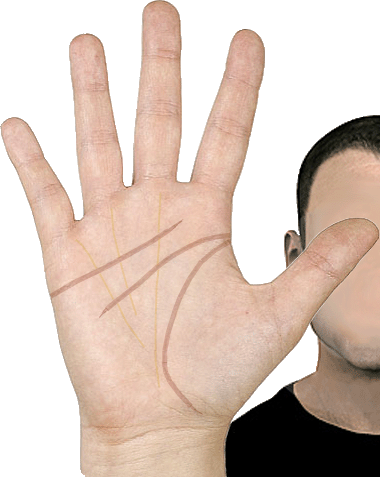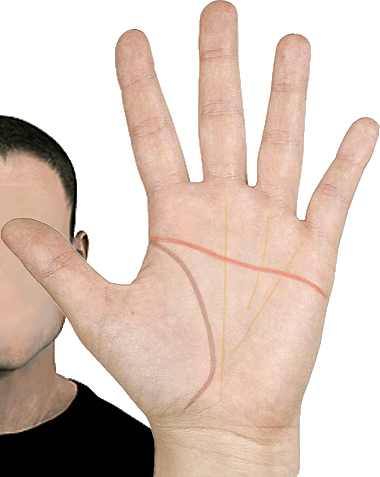SIMIAN LINE & HEALTH - Simian crease in medical problems!

Prevalence of simian lines in general populations is usually 3-5%, but in medical populations the prevalence is typically much higher!
Because the simian line tends to develop in the 2nd and 3rd trimester of prenancy (Kimura, 1991), it is used in the perspective of medical science as a potential marker that might be indicative for significant problems during the (early) development of the fetus in the womb - especially when it is not present in the hands of the parents. Thus, the formation of a simian line by principle usually involves a mix of genetic- & circumstantial influences combined.
The simian line became famous for it's significance in Down's syndrome, but in time hundreds of academic scientifc publications have linked simian lines with a 'rainbow' of syndromes, diseases and other medical problems.
However, many medical problems have been linked with the single palmar crease! WrongDiagnosis presents a list of 123 causes that appear to be linked with the simian line.
Quite a few syndromes have been linked with the simian line. The table below presents percentages for the occurence of the simian line in relatively common syndromes (including patients & controls from various countries):
|
Syndrome: |
Country |
Patients |
Controls |
|
|
||
-- (occurence: 1 in 700 births) |
31.5 % |
1.5 % |
|
|
53.3 % |
1.0 % |
|
|
48.0 % |
9.8 % |
|
|
M: 42.1 % |
M: 6.5 % |
|
|
28.8 % |
1.6 % |
|
|
|
||
-- (occurence: 1 in 6.000 live births) |
75.5 % |
- |
|
|
|
|
|
|
-- (occurence: 1 in 5,000 births; |
M: 22.0 % |
M: 1.0 % |
|
|
25.0 % |
4.2 % |
|
|
|
||
-- (occurence: 1 in 1.000 male births) |
M: 11.8 % |
- |
|
|
|
||
-- (occurence: 1 in 5.000 births) |
|
|
|
|
|
|
|
-- (occurence: 1 in 2.000 female births) |
F: 27.7 % |
- |
|
|
F: 70.0 % |
9.0 % |





